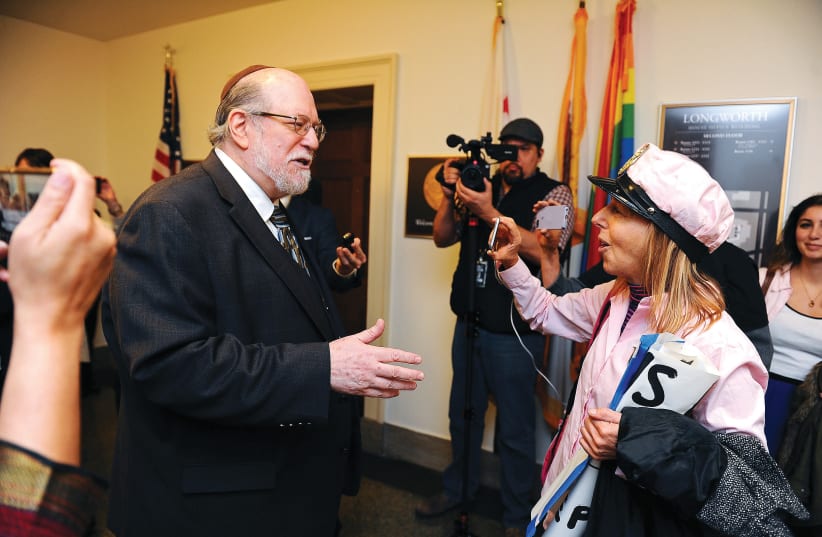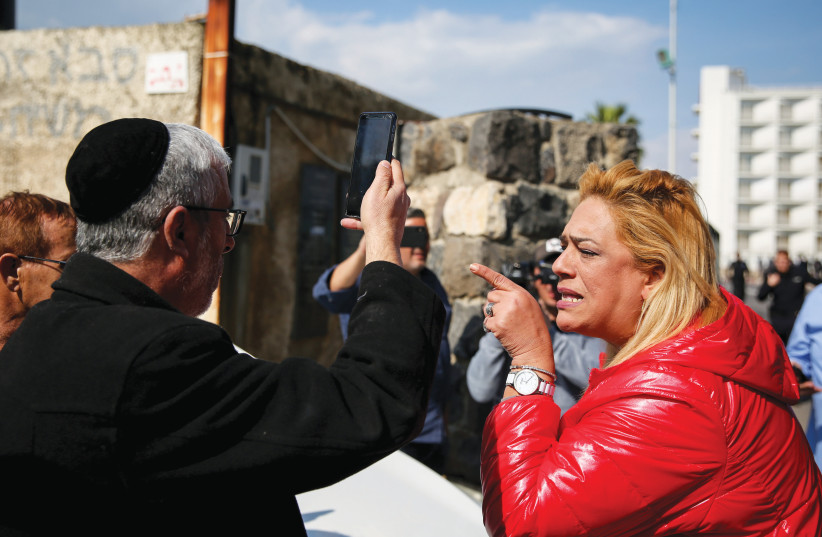My Quarrel with Hersh Rasseyner is a classic of Yiddish literature. First published in 1952, it was an instant success with Yiddish readers. In the following year, truncated versions of the text translated into English appeared in print and were equally acclaimed. Now we have Grade’s extraordinary book translated in full by Ruth R Wisse, who also provides an explanatory and analytical introduction.
In addition to the clear and readable English version, this edition contains the original text in Yiddish, starting from the other cover. Since the work is very short – it runs to no more than 46 pages in the English – this new edition is still a slim volume.
Upon publication, Grade’s book was acclaimed but controversial. It has remained so ever since. To start with, it is very difficult to categorize. Among a variety of possibilities, it could be described as a semi-autobiography, a fictionalized memoir, a dialogue, or a literary dispute. In her introduction, Wisse insists that it is actually a story, and she attempts to justify this description.
I am not convinced. The book concerns meetings between two protagonists on three occasions – in 1937, 1939 and 1948. The circumstances surrounding their encounters are only briefly sketched in. What is dealt with in detail is what passes between them, their contentious debates.
Grade and Rasseyner, students at the ultra-Orthodox Musar yeshiva in Bialystok were, like all yeshiva students, known by the name of their town. Chaim was dubbed Vilner; Hersh, Rasseyner. Grade left the yeshiva to become a poet and pursue a secular intellectual life, while Rasseyner, imbued with Musarist concepts, held passionately to the strict letter of Jewish Orthodoxy. Musarist teaching instilled in its students the absolute requirement to resist the temptations of modernity and self-gratification. All signs of such evils were to be rooted out.
THE INTELLECTUAL struggle between Rasseyner and Grade turns on the chasm between Orthodox and secular Judaism. The timeless nature of the conflict between them is highlighted by the fact that their argument starts before the Second World War, and ends after it. Although the lives of both protagonists were profoundly affected by the war – one of them survived incarceration in a death camp – the issues at the heart of their dialectic seem hardly affected.
In their encounter in 1948, there are indeed post-war references to the Holocaust, and for this reason some critics categorize the work as a classic of Holocaust literature. To do so is to misunderstand Grade’s demonstration that the discourse between Grade and Rasseyner, and its intellectual sweep, is timeless.
In this intense and absorbing work, Grade lays out the abiding, ageless arguments in favor of a strict adherence to the pure life of the Torah, avoiding all temptation to become contaminated by the secular world, thus going against the requirement laid on the Jewish people to live in the world, interact with humanity, and strive to be a light unto the nations. The arguments in favor of both ways of life are set out in detail and with passion by the two protagonists.
The marvel of Grade’s work is that the arguments opposing these deeply held convictions, condemning them even, are set forth with equal passion. As uncommitted readers progress through the work, they are convinced at one moment of the need to adhere strictly to the halachic principles of Judaism; at the next moment, of the value of striving for the benefit of others in a secular life; then of why extreme Judaic orthodoxy is narrow, restrictive and selfish; and finally of the shallowness of the secular life and how it must lead to the dilution and eventual loss of Judaism by way of assimilation and intermarriage.
In short, Grade provides the complete gamut of arguments surrounding the basic issue that has haunted the Jewish people almost from the start of its history. The wonder is that the detailed arguments for and against, the understanding that permeates their exposition, and the passion with which they are held by Grade and Rasseyner all emanate from one mind – that of Chaim Grade.
“Our paths are different, both spiritually and in everyday life.”
Chaim Grade
How does the book end?
When the secular Grade tells Rasseyner, “Our paths are different, both spiritually and in everyday life,” he hopes they may meet again sometime in the future. “And may I be as Jewish then as I am today. Reb. Hersh, let us embrace.”
Translator Wisse has the last word. “The debate in this story was never meant to end,” she writes, and referring to this new edition of Grade’s work concludes: “Thus may it continue.”
Amen to that.
My Quarrel with Hersh Rasseyner By Chaim Grade Translated by Ruth R. WisseToby PR144 pages; $19.95

